PowerISO can create bootable USB drive for Linux. You can then
setup or run Linux from the USB drive. PowerISO supports most of the Linux
distribution, such as Ubuntu, Fedora, Debian, CentOS, and so on. You will need
a Linux setup ISO file, which usually can be downloaded from the its official
website.
Below is a list of supported Linux ISO files,
AlmaLinux, Arch
Linux, Archboot, CentOS,
Debian, Deepin
Linux, Elementary OS, Fedora,
Garuda Linux, Kali
Linux, Knoppix, Linux
Mint, Manjaro Linux, Miracle
Linux, openEuler, OpenSUSE,
Oracle Linux, ReactOS,
Red Hat, Rocky Linux,
Slackware, Ubuntu,
...
Please follow
the steps to install Linux from USB drive,
Step1: Create Bootable USB Drive for Linux
1. Start PowerISO (v8.6 or newer version, download here).
2. Insert the USB drive you intend to make bootable.
3. Click on the USB toolbar icon, and select "Create
bootable USB drive..." from the popup menu.
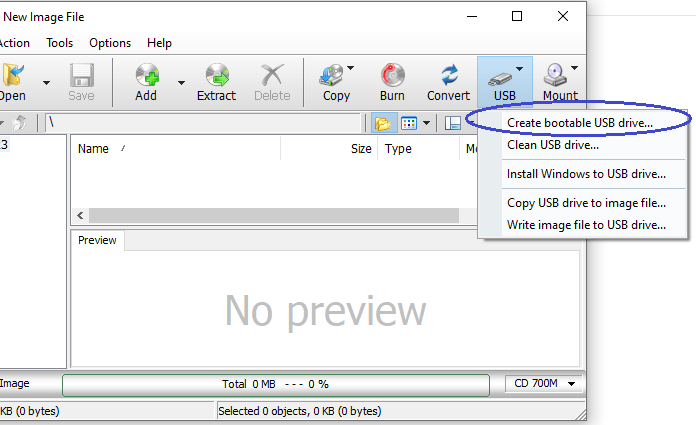
4. PowerISO requires system privilege to write the USB
drive, you need confirm the UAC dialog to continue.
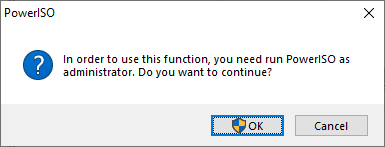
5. The "Create Bootable USB Drive" dialog
will popup.
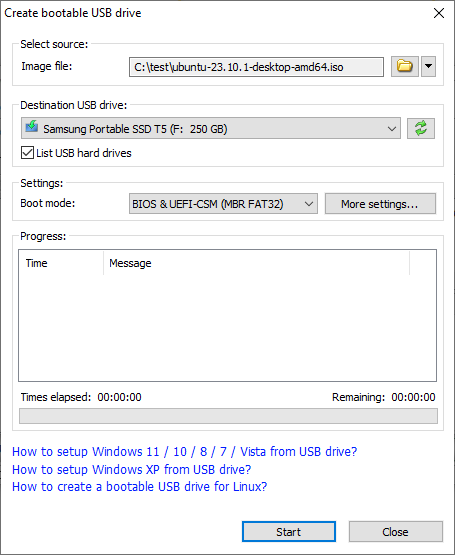
Click "Browse" button to select the iso file for Linux.
Select the USB drive from the "Destination USB drive" list. If multiple USB drives are connected to the computer, please make sure that you have selected the correct drive.
Check the option "List USB hard drives" if you want list the USB
hard drives.
Choose the proper boot mode from the list. The available
options are "BIOS & UEFI-CSM ((MBR FAT32)", "UEFI (GPT
FAT32)", and "Raw-write". For most modern computers, "UEFI
(GPT FAT32)" is suggested. If you want to install an older system, or your computer doesn't support UEFI, you can select the option "BIOS & UEFI-CSM". For some image files, you can also try the option "raw-write". Please remember to enable the CSM support in BIOS settings if
you create the USB drive in BIOS & UEFI-CSM mode.
6. Click "Start" button to start creating bootable USB drive for Linux. Before writing files to the USB drive, PowerISO will show a dialog prompts you that all data in the USB drive
will be overwritten. Please click "OK" to confirm and continue. PowerISO will then start writing, and show the progress information when writing USB drive.
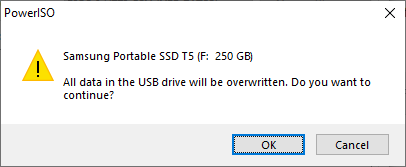
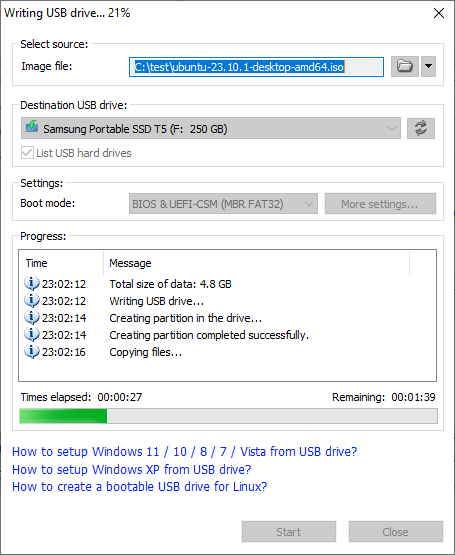
9. After all data has been written to the USB drive, you should receive a message indicating that the
bootable USB drive has been created successfully.
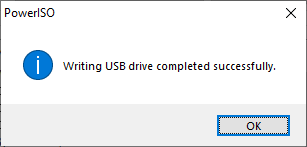
Step 2: Configure the BIOS to boot from the USB drive
You should now reboot and go into the BIOS configuration to
boot from USB. Instructions for doing so vary wildly from system to system, but
generally entail the following:
-
Reboot the system.
-
While booting (before Windows starts loading), get into
the BIOS configuration screen by hitting something like F1, F2, Delete or
Escape. Hotkey instructions are generally provided on the screen.
-
Go to the section that contains your boot devices.
-
With your USB drive plugged in, the USB drive should be
listed. If it isnít, your system might not support booting from USB.
Assuming that it is supported (as is the case with virtually all modern
hardware), promote your USB drive to the primary boot device. If you
created the bootable USB drive in "BIOS & UEFI-CSM" mode,
please enable the CSM support in BIOS settings.
-
Exit from the BIOS configuration, saving all changes.
Please notice that you can seriously screw up your system by
providing incorrect BIOS settings!
Step 3: Boot and setup or run Linux from USB drive
Assuming that you properly configured your BIOS and your USB
drive supports booting, Linux or Linux setup program should now load.
Depending on the speed of your USB drive, this may take a while.
If it isnít working, then double-check the following before
making a scene:
-
Is your BIOS properly configured for booting from the USB
device? (Is the USB device listed and does it have top priority?) Please
enable the CSM support if the USB drive can only support boot in BIOS
mode.
-
Have you correctly prepared the USB drive in step one?
(Restart the procedure.)
-
Does your USB drive properly support being booted from?
(Try another one!)






